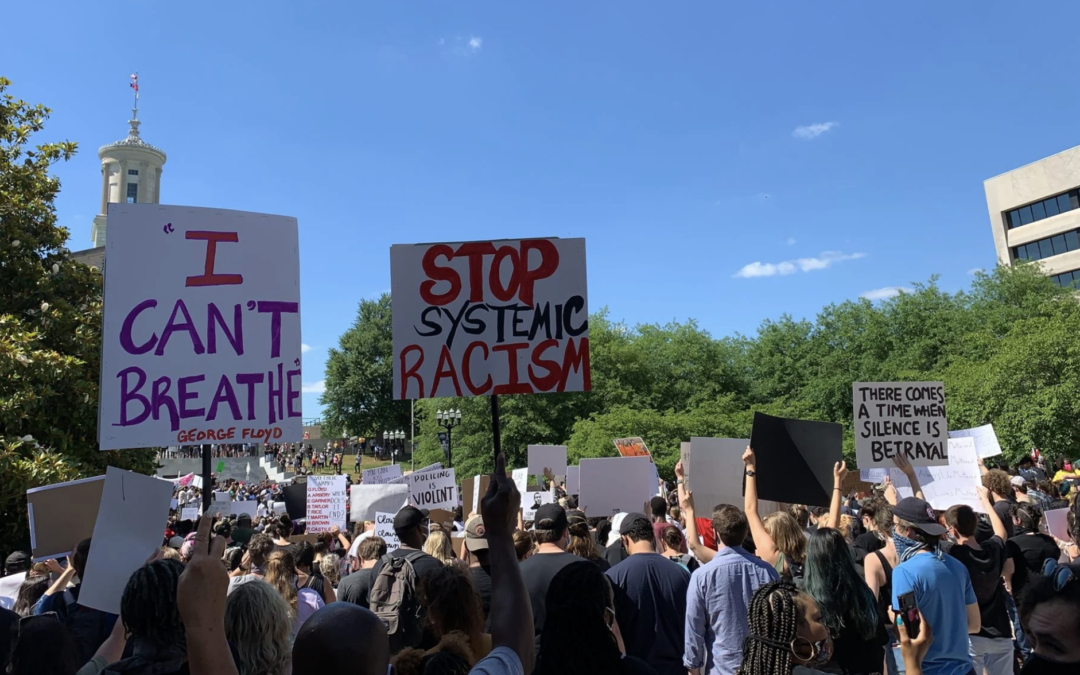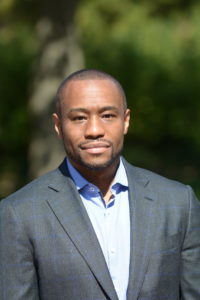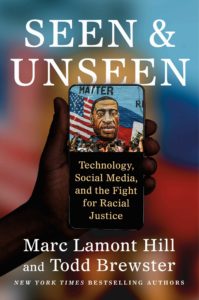
by Maina Mwaura, Urban Faith Contributing Writer | Jul 13, 2022 | Commentary, Headline News, Social Justice |
The unjust killings of African Americans at the hands of law enforcement over the past several years have become all too common news. But New York Times bestselling author Marc Lamont Hill and his co-author Todd Brewster masterfully weave together the strands of social justice uprisings, technology, and social media to talk about how the deaths of black people by police led to viral and physical social justice movements that have reshaped our national discourse.
UrbanFaith contributor Maina Mwaura spent a few moments with Marc Lamont Hill to discuss his the new book Seen & Unseen: Technology, Social Media & the Fight For Racial Justice. The full interview is above. More about the book is below.
 With his signature “clear and courageous” (Cornel West) voice Marc Lamont Hill and New York Times bestselling author Todd Brewster weave four recent pivotal moments in America’s racial divide into their disturbing historical context—starting with the killing of George Floyd—Seen and Unseen reveals the connections between our current news headlines and social media feeds and the country’s long struggle against racism.
With his signature “clear and courageous” (Cornel West) voice Marc Lamont Hill and New York Times bestselling author Todd Brewster weave four recent pivotal moments in America’s racial divide into their disturbing historical context—starting with the killing of George Floyd—Seen and Unseen reveals the connections between our current news headlines and social media feeds and the country’s long struggle against racism.
For most of American history, our media has reinforced and promoted racism. But with the immediacy of modern technology—the ubiquity of smartphones, social media, and the internet—that long history is now in flux. From the teenager who caught George Floyd’s killing on camera to the citizens who held prosecutors accountable for properly investigating the killing of Ahmaud Arbery, ordinary people are now able to reveal injustice in a more immediate way. As broad movements to overhaul policing, housing, and schooling gain new vitality, Seen and Unseen demonstrates that change starts with the raw evidence of those recording history on the front lines.
In the vein of The New Jim Crow and Caste, Seen and Unseen incisively explores what connects our moment to the history of race in America but also what makes today different from the civil rights movements of the past and what it will ultimately take to push social justice forward.

by Candice M. Benbow | Jul 3, 2012 | Feature |

From prisoners’ rights to lynching to Black women’s identity, the summer presents a unique opportunity for us all to engage in academic works that provide fresh perspectives on the world we live in. Scholars from a myriad of disciplines, investigating Black life in America, can aid us as we seek to strengthen our presence in communities addressing social needs. So here, from our friends at Urban Cusp, are just a few books that will enrich your mind and soul this summer:
In what will possibly be remembered as one of the greatest contributions to the study of African American life, political prisoner Mumia Abu-Jamal and Columbia professor Marc Lamont Hill offer readers access to dynamic conversations and insight. From topics ranging from Hip-Hop to politics to love and relationships, these two men, living two different realities, give others a chance to hear from themselves what it means to navigate as Black men in today’s society.
Possibly the most necessary voice in Black Liberation Theology formation, James Cone’s latest offering examines the parallel between the crucifixion of Jesus and the lynching of African Americans. Cone also analyzes why this connection has largely been ignored and the theological implications. The Cross and the Lynching Tree, if read as a collaborative exercise between Black and White congregations, could spark dialogue leading to true healing and reconciliation.
Many Black congregations have regarded hip-hop culture, for years, as “the devil’s playground.” That ideology has perpetuated the disconnect between younger and older generations of African-Americans. In That’s the Joint!, many of today’s leading intellectuals engage in Hip-Hop scholarship discussing its history, global impact, social activism and identity politics. This reader will be essential to any leader interested in understanding the full context of a culture often misunderstood.
Written by the late Rev. Ronald Nored, Reweaving the Fabric tells how one church in Birmingham, Alabama worked to regain the trust of their community and collaborated with them to completely revitalize the neighborhood. Complete with step-by-step procedures, surveys and substantive advice, Reweaving the Fabric is necessary for any congregation seeking to collaborate with their community for social change but needs help envisioning what it looks like.
Using current statistics and stories from their national poverty tour, Smiley and West paint a portrait of poverty in America and provide 12 suggestions for what can be done to eradicate it. The Rich and the Rest of Us can help churches understand the economic challenges their members and surrounding communities face and steer them in a direction of shaping ministry initiatives to meet pressing needs.
Glave, in Rooted in the Earth, traces the historical and adverse relationship between African-Americans and nature, from crossing oceans during the transatlantic slave trade to lynchings from southern trees. Glave works to define the role Black communities can play in sustainable development initiatives. An area where many African-American congregations have been silent, Rooted in the Earth enables Black churches to find their voice in environmental justice and conservation efforts.
Through varied analyses, Harris-Perry traces some of the most prevailing stereotypes of African-American women and examines how these stereotypes impact their political engagement. Central to the book’s thesis is the notion of misrecognition, including how Black women misrecognize themselves. As an organization comprised of 85% women, Sister Citizen offers Black congregations an opportunity to speak openly and honestly about issues affecting women.
In this work, McRoberts analyzes the religious ecology in one of the roughest neighborhoods in Boston, Massachusetts. He finds that 29 churches are within this one community and they are mostly run and attended by people who don’t live there but commute in for worship. With these characteristics, congregations are less likely to make strong connections with the community and participate in its social change. Streets of Glory is vital for leaders with congregations similar to those researched and helps those churches gain insight on how to build sustaining community relationships.
Are there any books that you’ve read from this list that you have thoughts on? What books would you add to this list? Let us know below.
This post originally appeared at UrbanCusp.com. It is reprinted here by permission.

 With his signature “clear and courageous” (Cornel West) voice Marc Lamont Hill and New York Times bestselling author Todd Brewster weave four recent pivotal moments in America’s racial divide into their disturbing historical context—starting with the killing of George Floyd—Seen and Unseen reveals the connections between our current news headlines and social media feeds and the country’s long struggle against racism.
With his signature “clear and courageous” (Cornel West) voice Marc Lamont Hill and New York Times bestselling author Todd Brewster weave four recent pivotal moments in America’s racial divide into their disturbing historical context—starting with the killing of George Floyd—Seen and Unseen reveals the connections between our current news headlines and social media feeds and the country’s long struggle against racism.

